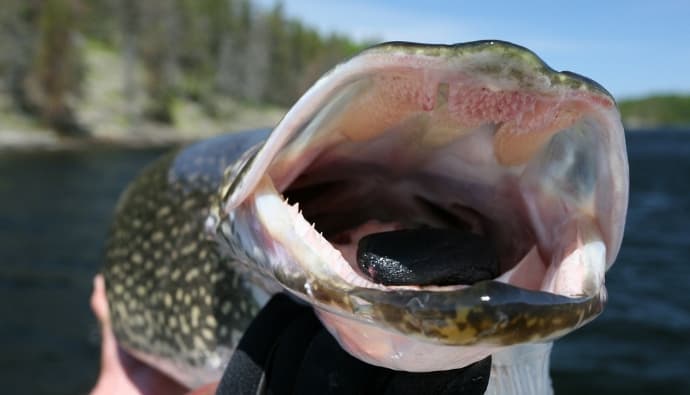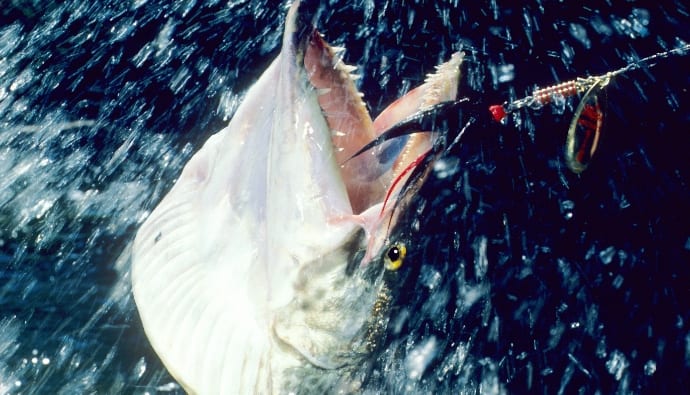The blue runner fish is fun to catch and even use as bait.
This extensive guide explains how to catch and even cook this unique fish. We’ll also show you how to rig one up to catch other species.
Let’s go fishing!
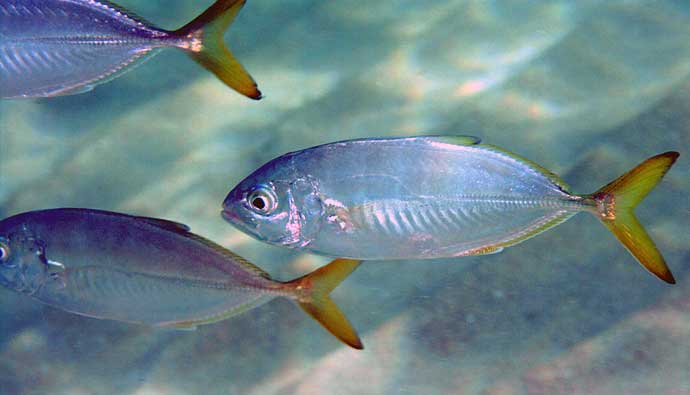
Overview
The blue runner fish is a species that belongs to Carangidae – the jack family. They’re found in the Atlantic Ocean in waters that range from Canada to Brazil and even from Great Britain to Angola. This species can reach up to 70 centimeters in length and weighs about 5 kilograms.

Blue runners are predatory fish that hunt crustaceans and other invertebrates for food. The fish inhabits both offshore and inshore habitats such as coral reefs. They’re found swimming around artificial structures like oil rigs—juveniles like to congregate in lagoon waters and shallow reefs.
Class Osteichthyes fish are fast fish and push your gear to the limits, especially when catching them with a fly rod and reel.
Blue Runner Fish Facts
| Scientific Name: | Caranx crysos |
| Common Name(s): | Blue Runner, hardtail jack, hardtail, green jack, jackfish, blackjack, bluestripe jack, Egyptian scad, hardnose |
| Family: | Carangidae |
| Identifying Characteristics | Blue runner fish has an elongated and compressed body. Their upper jaw has an irregular series of outer canines, and the lower jaw has a single band of small teeth. |
| Depth Range | 0 to 100 m |
| Habitat | They’re found across the Atlantic Ocean in waters ranging from Canada to Brazil and even from Great Britain to Angola. |
| Limits | Check your local regulations |
Blue Runner Habitat
This boney fish (Osteichthyes) remains inshore through most of its range, but it can be found in reefs that are 100m underwater. It is most common around reefs, upper slopes of deep reefs, and outer shelf edges.
Juveniles take shelter in inshore lagoons around mangroves, seagrass, and patches of coral reefs. They only swim out to deeper water as adults.
Some anglers have also caught the fish around the Mississippi delta. This means blue runners can tolerate lower salinities.
How to Catch Blue Runner Fish
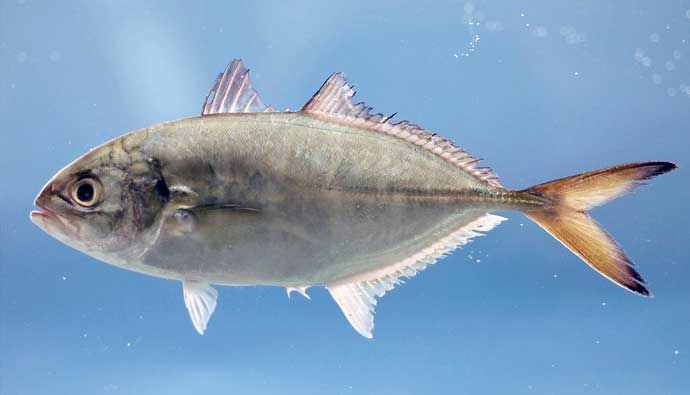
This hardtail fish may be used as prized baitfish for larger game species, but that doesn’t mean they’re easily caught. The fish is powerful for its size, so use Sabikis with strong main lines that can pass a 50 to 60-pound test.
The best way to catch them is with a hook and line, but if you are using a rig, use the many gold set-up that comes with a weight attached to the bottom—Jig this around a wreck or market buoys blue runners can be found.
If you are trolling for the fish, use a blue runner as bait by hooking it through the cartilage in the nose. Use chum as bait to attract large schools, especially if you want to catch bigger fish with them.
Blue Runners Fishing Tactics
- Prevent blue runners from tangling in your Sabiki rig by weighing it down with a weight that is at least 2 ounces heavy.
- Keep the school of blue runner fish by throwing chum in the water near the boat and continuing to hook and line them.
Blue Runner Fishing Tips
- Troll for blue runners with single hook mackerel spoons and tip them with squid to attract the fish. Troll slowly towards a wreck or a reef.
- Use shrimp as natural bait to attract this fish rather than crustaceans, which can slip off the hook easily.
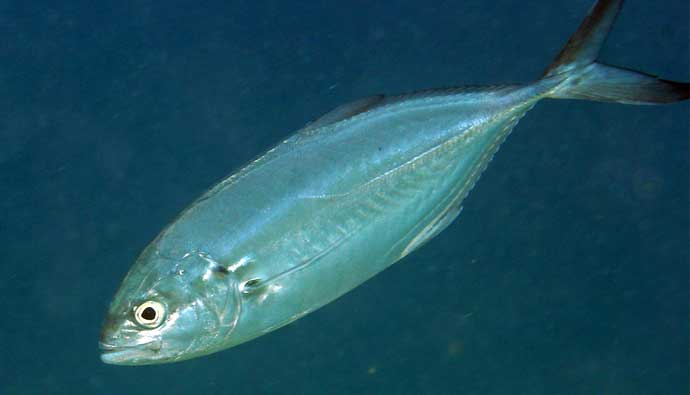
Blue Runner Seasons
Blue runner sportfishing is a blast! While they can be caught year-round, you can spot large schools during the spawning season. Florida runners spawn offshore year-round.
Spawning activity peaks from June to August, especially in waters around the Gulf of Mexico.
A secondary peak also occurs during October in northwest Florida, while in others, the fish spawns between January and August.
How to Rig Blue Runners as Bait
To use blue runners as live bait, use circle hooks, especially if you are casting, drifting, fishing on anchor, or slow trolling. All you need to do is attach a hook to the roof of the mouth of the fish and pierce it through the upper jaw. To make it drift, attach a J-hook through the back of the fish and above the dorsal fin.
How to Clean Blue Runners
- Place the bluejack fish on a cleaning board on one side.
- Start your cutting from the base of the head of the fish. Continue cutting down the spine and keep cutting till you reach the tail.
- Make an incision from the cut near the tail down to the anal fin.
- With the tip of the knife placed at the top of the fish’s spine, at the back of its head, slide it across the fish’s backbone till you reach your first incision.
- The removal of the fillet is done by making many passes inside the body along the spine.
- Flip the blue runner and repeat the process on the other side.
Blue Runner Fish Recipe
- Let’s make some blue runner seafood! Slice the meat 1 inch apart and gut the fish.
- Stuff the crevices with ginger and garlic, and stuff the stomach cavity with onions and garlic.
- Season with sea salt and lemon pepper.
- Grill over a heated grill on both sides till done.
- Serve with lemon wedges.
Frequently Asked Questions
The blue jackfish (blue runner) is a baitfish, but larger ones tend to carry the ciguatera toxin in their flesh.
The flesh of this fish is quite delicious and flaky, even though most people use it to catch larger fish.
This boney fish is a fast-swimming predator that prefers to eat smaller fish in coastal waters. Yet, some also eat crustaceans, shrimp, and copepods. More significant adults eat large zooplankton, especially during the summer months, and some also eat juvenile fish during this time.
Insider Advice
The blue runner fish is abundant all year round, but the best time to catch large schools is during the spawning season.
Give the blue runner a chance, and don’t forget to use our blue runner recipe mentioned earlier. Though blue runner as seafood is scarce in restaurants, that doesn’t mean you shouldn’t give the recipes a try.
You’ll also enjoy using it as bait to catch bigger game fish.
Do you have any tips, tricks, and strategies to catch this fish in droves?




 Facebook
Facebook YouTube
YouTube



